Agile organization: Benefits, characteristics and methods
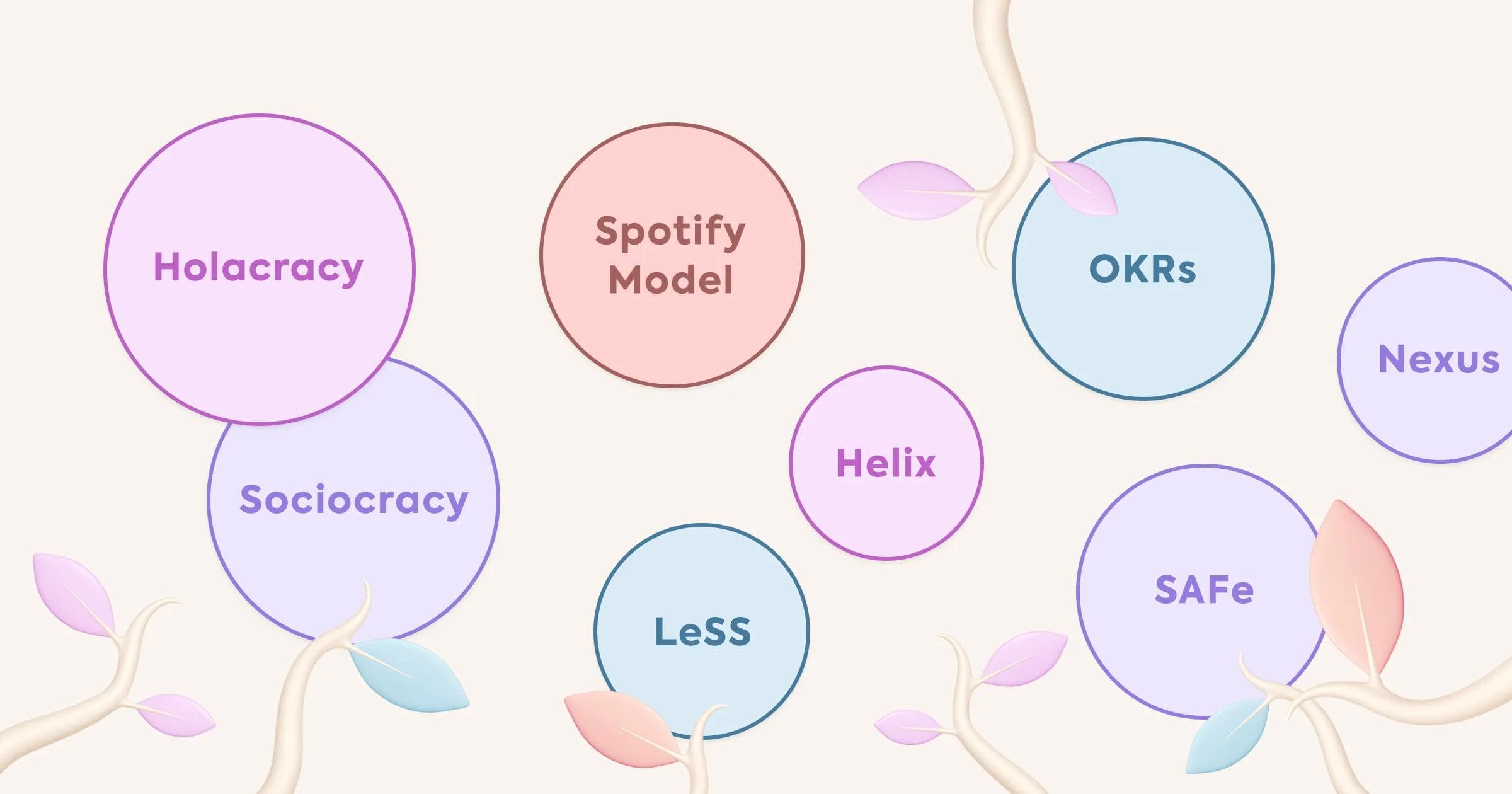
Markets change quickly and frequently these days. Many companies are therefore restructuring themselves as agile organizations in order to meet these challenges with flexibility and adaptability. After all, these new challenges are no longer manageable, or atleast difficult to manage, using traditional business models.
Those who cannot adapt will sooner or later fall by the wayside.
In this article, we explain what exactly an agile organization is, the advantages it can have for you and your company to rely on agile organizational forms and the methods you can use to achieve this.
What to expect:
- What is an agile organization? Definition
- What makes agile organizations different? 6 characteristics
- What are the benefits of agile organizations?
- Agile organization – examples from practice
- 8 methods for an agile organizational structure
- Conclusion: Agile organization is a competitive advantage
- Agile organization – FAQ
What is an agile organization? Definition
As we all know, agility is about adaptability and flexibility. Accordingly, an agile organization is an organizational structure that enables companies to react quickly and flexibly to new challenges and changing conditions in the market.
Ideally, agile organizations constantly seek to move one step further and proactively seize opportunities for change, rather than just waiting for a reaction to become necessary. Everyone is called upon here, be it top management, executives or individual employees.
The bottom line is that agile organizations focus on agility and continuous improvement, and live and apply the values and principles of agile project management at all levels (not just in individual teams or projects) on a daily basis.
Agility in teams vs. agility at the organizational level
Looking at this definition, it quickly becomes clear that simply introducing agile ways of working in individual teams does not make for a successful agile organization. Rather, what matters is that the collaboration of all teams and team members in an organization is well coordinated.
The following quote from organizational theorist Russel Ackoff sums it up well:
What makes agile organizations different?
An agile organization is characterized by its ability to adapt to changes in the shortest possible time and to act quickly and purposefully. In an agile organization, projects are no longer planned down to the smallest detail over a long period of time, and rigid, hierarchical structures have had their day.
Instead, agile organizations are characterized by an open corporate culture, a great deal of personal responsibility and an open communication style. Leadership is also practiced differently in agile organizations compared to traditional companies. Decisions are made by the team. Empowered teams work across departments and are self-organized. The basis for all this is an agile mindset. In addition, the needs of the customers are always the focus.
The 6 characteristics of agile organizations
In summary, six characteristics can be defined that make up the DNA of agile companies:
- Sense of purpose: Agile companies pursue a clear mission – in other words, a higher sense of purpose and vision. This provides the framework for self-organization and agility. Through this shared purpose and vision, everyone in the company knows what they are working toward.
- Customer centricity: Agile organizations are customer centric. There are active partnerships with customers and they don't just give their “Go” for the product or project after it is finished. Instead, they are actively involved in the development of products and services and provide continuous feedback. Based on this feedback, agile organizations then continually evolve their existing processes.
- Agile leadership: Leadership in agile organizations is less controlling and more guiding. Agile leaders set the framework within which empowered employees operate autonomously. In addition, they provide advice and support as needed. They create an environment in which everyone can contribute to the overall success of the organization.
- Agile methods: Agile methods help teams and organizations structure collaboration and deal with the complex demands of the working world – providing a set of rules that help organize business processes as well as teams in an agile way.
- Continuous improvement: Agile organizations are seeking continuous improvement opportunities. They regularly evaluate where they currently stand and what they have already achieved (in so-called “reviews” or “retrospectives”) according to the “inspect and adapt” principle – and adjust processes and structures accordingly if necessary.
- Culture and mindset: The mindset of each individual employee is probably the most important factor if an “agile transformation” – i.e., the change from a traditional organizational approach to an agile organization – is to succeed. Everyone must have internalized the agile values and principles and display behavior that corresponds to them. It is also important to establish a culture of continuous learning in which mistakes are seen as an opportunity and which is characterized by trust, respect and transparency. This can only succeed if everyone pulls together and everyone knows how they contribute to the “bigger picture” with their work.
What are the benefits of agile organizations?
But in what specific ways do agile organizations outshine traditional organizations? We have summarized the most important benefits of agile organizations here:
- Agile organizations can react more flexibly to changes – whether these are sudden shifts in market conditions, changing customer requirements or full-blown crises.
- Agile companies work more efficiently. Ideas and concepts can be tested more quickly within an agile organization and optimized in a more targeted manner.
- Agile organizations maintain a higher level of customer satisfaction. Feedback is incorporated directly and customer wishes are the focus. This creates real added value for customers, which in turn has a positive effect on their satisfaction.
- Agile organizational structures increase employee engagement and motivation and improve collaboration. Team members are working cross-functionally, communicating more efficiently and, as a result, delivering better results. This in turn motivates and ensures a change in mentality.
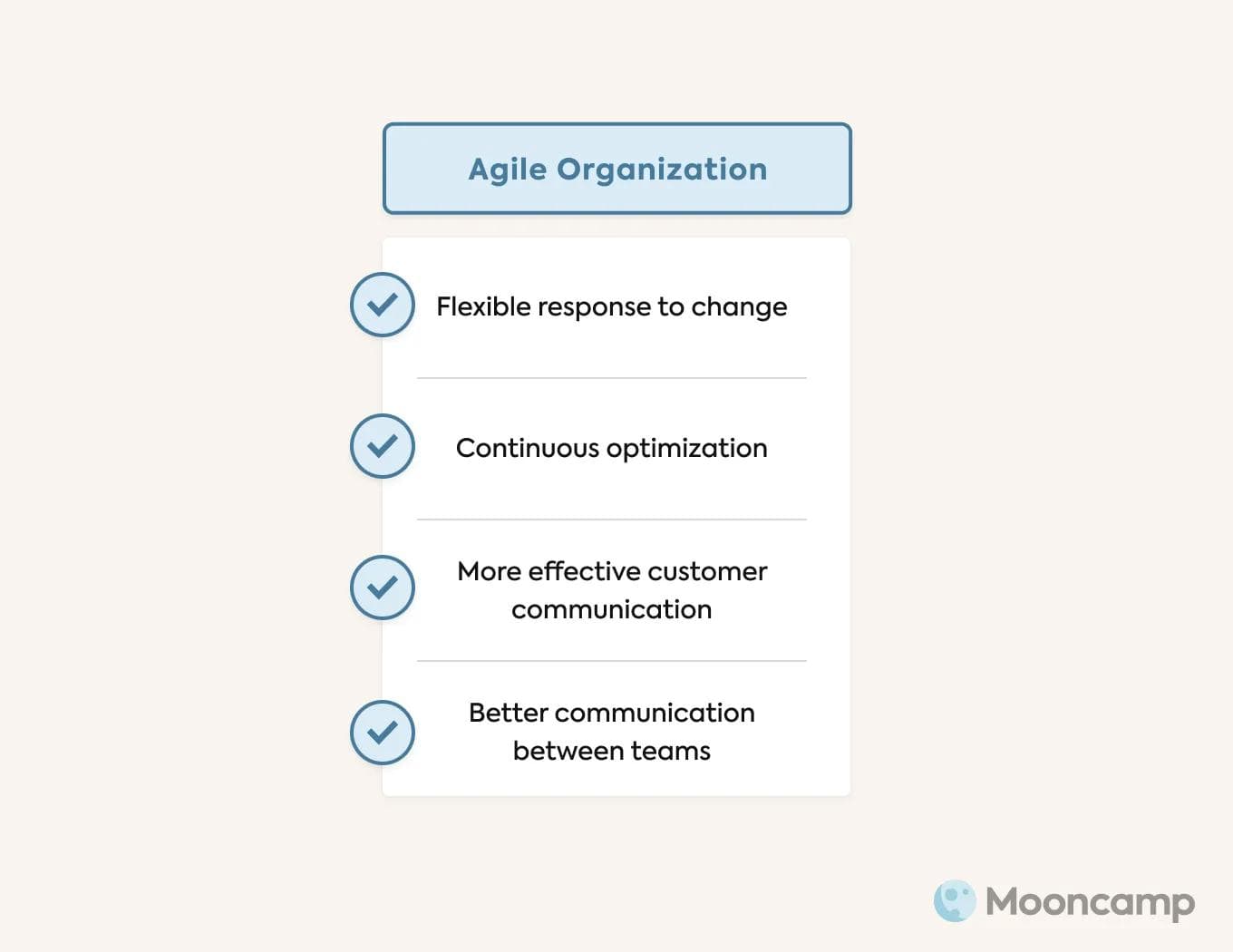
Agile organization – real world examples
Companies are diverse, and just as diverse are the possibilities for agile transformations. We will introduce you to some of these possibilities a little further down in the article. First, however, we would like to illustrate what an agile organization can look like with a few real-world examples.
Although agility is often associated primarily with startups and agencies, there are also some large corporations that have successfully transformed themselves. Probably the best-known representative of this genre is the music streaming platform Spotify. It even has its own agile method named after it. But other “big players” such as Deutsche Bahn, Adidas, sipgate, Haier or ING are now also focusing on agility.
Each of these companies approach the topic of organizational agility in a different way:
Adidas, for example, has been relying on an agile approach since 2015 to increase its speed and innovative power – starting by focusing on the topic of leadership. The sporting goods manufacturer breaks down the agile principles into four factors: increasing competence, speed, flexibility and responsiveness.
The Internet telephony provider sipgate, on the other hand, works with an individual version of Scrum, and even offers so-called “open doors” where you can see the success of the model up close. sipgate began its agile transformation in 2010: Scrum was first introduced in IT and then rolled out step by step, team by team. Each team adapted only those elements that really fit.
ING bases its agile organizational structure largely on the Spotify model: Management was restructured, hierarchy levels removed, and teams organized into tribes, chapters, and squads. Projects are also planned and executed in shorter time-frames.
8 methods for an agile organizational structure
The above examples already hint at it: There are many different methods that can be used to organize not only individual teams, but also entire companies in an agile manner.
We will now take a closer look at eight agile working methods that can make this work:
- Helix
- LeSS
- Nexus
- OKRs
- Spotify
- SAFe
- Sociocracy
- Holacracy
1. Helix
The Helix Organization concept originates from the strategy consulting firm McKinsey. It divides management within an organization into two separate, yet interlinked “management strands”:
- "Value Creation" takes care of all day-to-day activities - always with the goal of delivering the most value-creating work possible.
- The "People and Capabilities" department deals with all personnel-related issues and ensures that employees can develop in the best possible way.
The Helix is thus a fundamental concept that is also integrated in many structural frameworks, e.g. Scrum or Spotify.
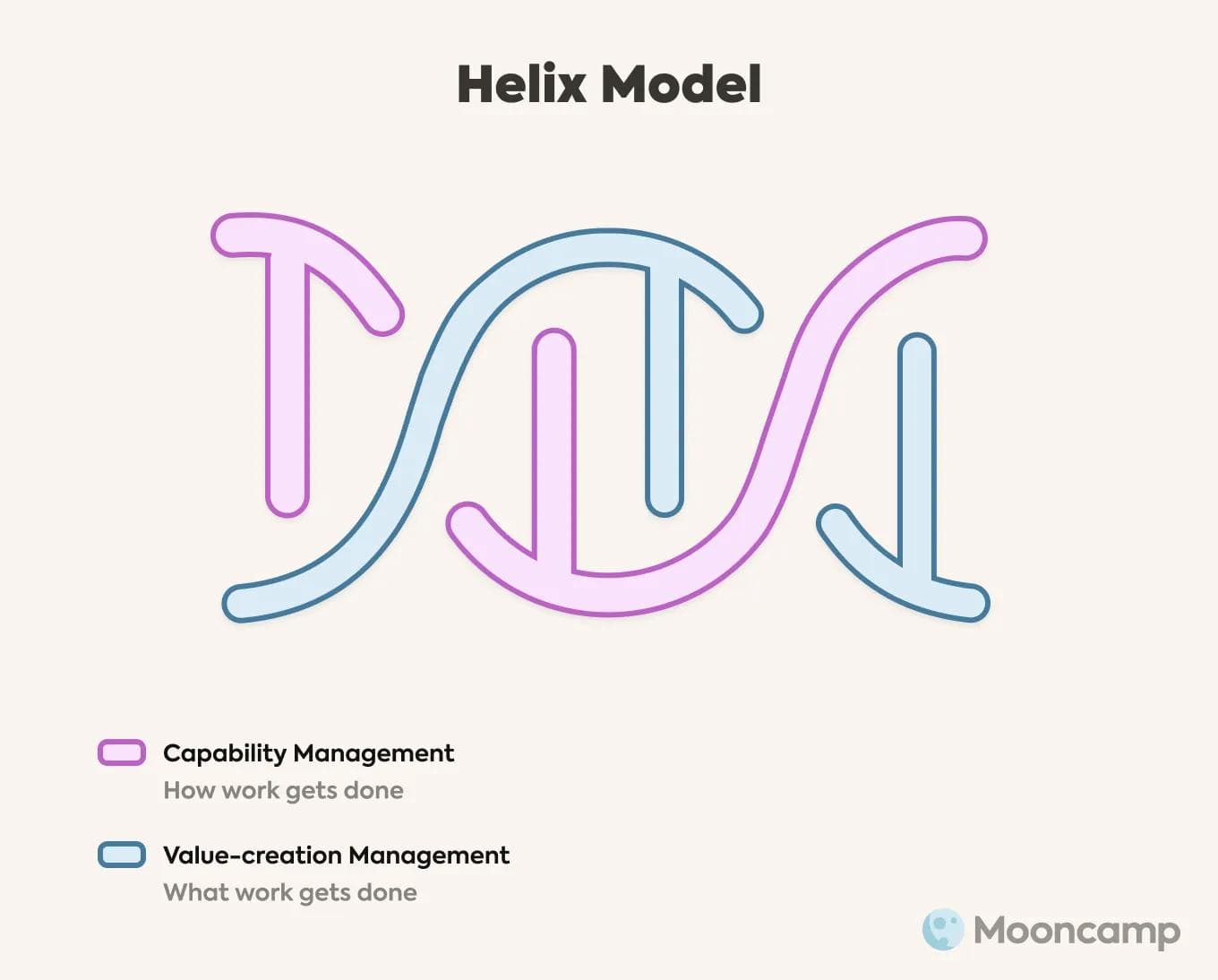
2. LeSS
The abbreviation “LeSS” stands for “Large Scale Scrum” and basically already expresses what this method is about: rules for the collaboration of multiple Scrum teams. LeSS is based on Scrum and extends the rules of the framework to make it scalable at the organizational level. LeSS is suitable for two to eight teams and, in the “LeSS Huge” version, even for more than eight teams.
💡 Tip: You can read about how Scrum essentially works in our article about the 10 most important agile methods.
3. Nexus
Nexus is also a so-called “Scrum of Scrums” framework, which is designed for three to nine teams that develop one product together. At its core, it is based on the classic Scrum roles and events, whereby there is only one product owner who is responsible for all Nexus teams, as well as one to four Scrum masters and an overarching review. In addition, there is a Nexus Integration Team (NIT), which consists of the product owner, an NIT Scrum master, and experts from the development teams, and is responsible for making sure everything runs smoothly from a technical and coordination standpoint. All Scrum events (apart from the review) take place twice – both at the team level and in a scaled Nexus version. This means, for example, that in addition to the daily Scrum in the development teams, there is also a “Nexus daily Scrum” at the organizational level, in which selected representatives of the individual teams participate. The same applies to sprint planning and the sprint retrospective, only the review does not take place again separately at team level.
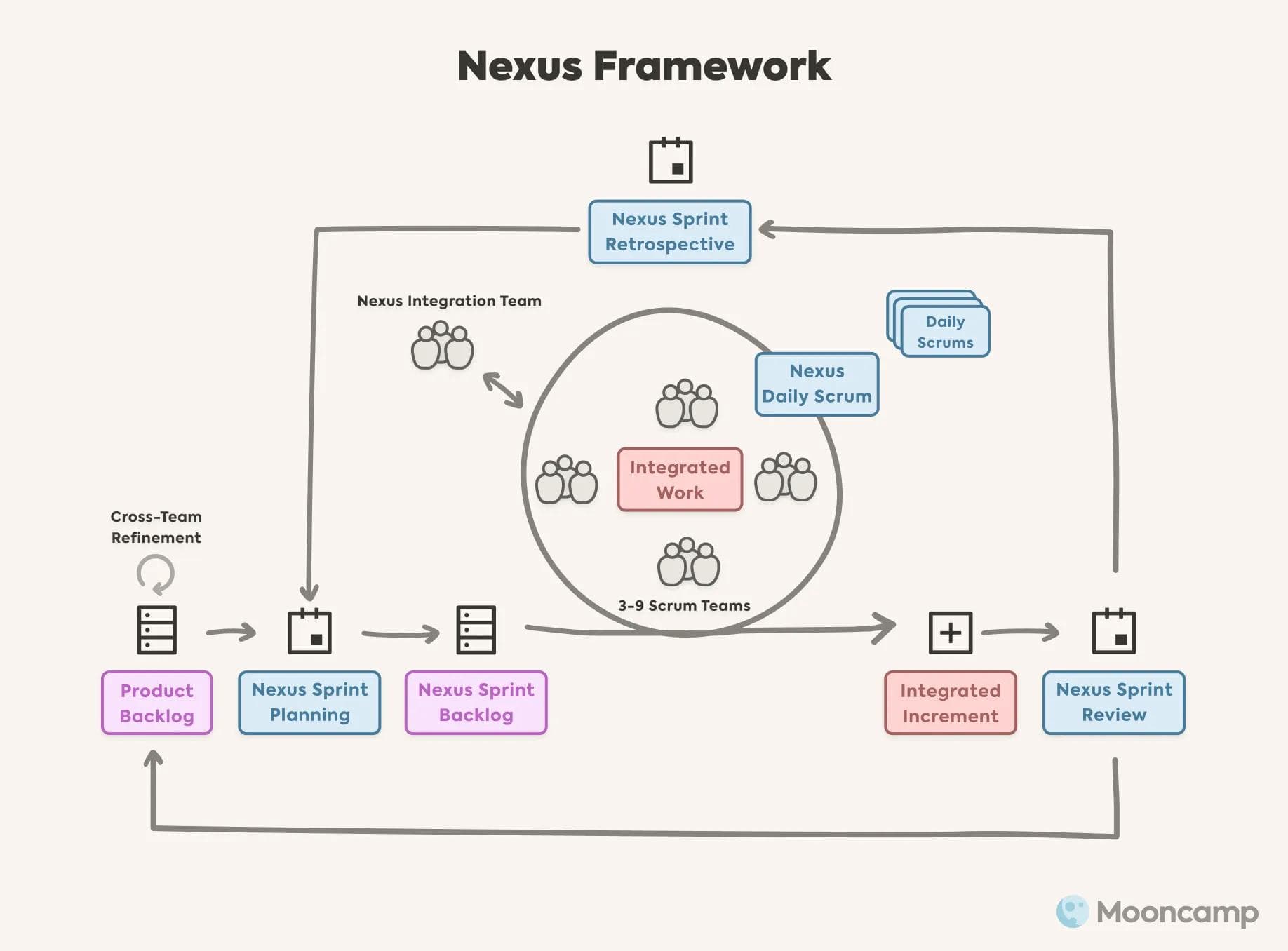
4. OKRs
Objectives and Key Results (OKRs) work for individual teams as well as on a higher strategic level. In this method, qualitative objectives are defined for the entire company and linked to two to four quantitative key results. The individual teams in turn define their own objectives and key results, which are based on the company's OKRs, and implement them independently. This makes the company's vision and mission tangible for employees.
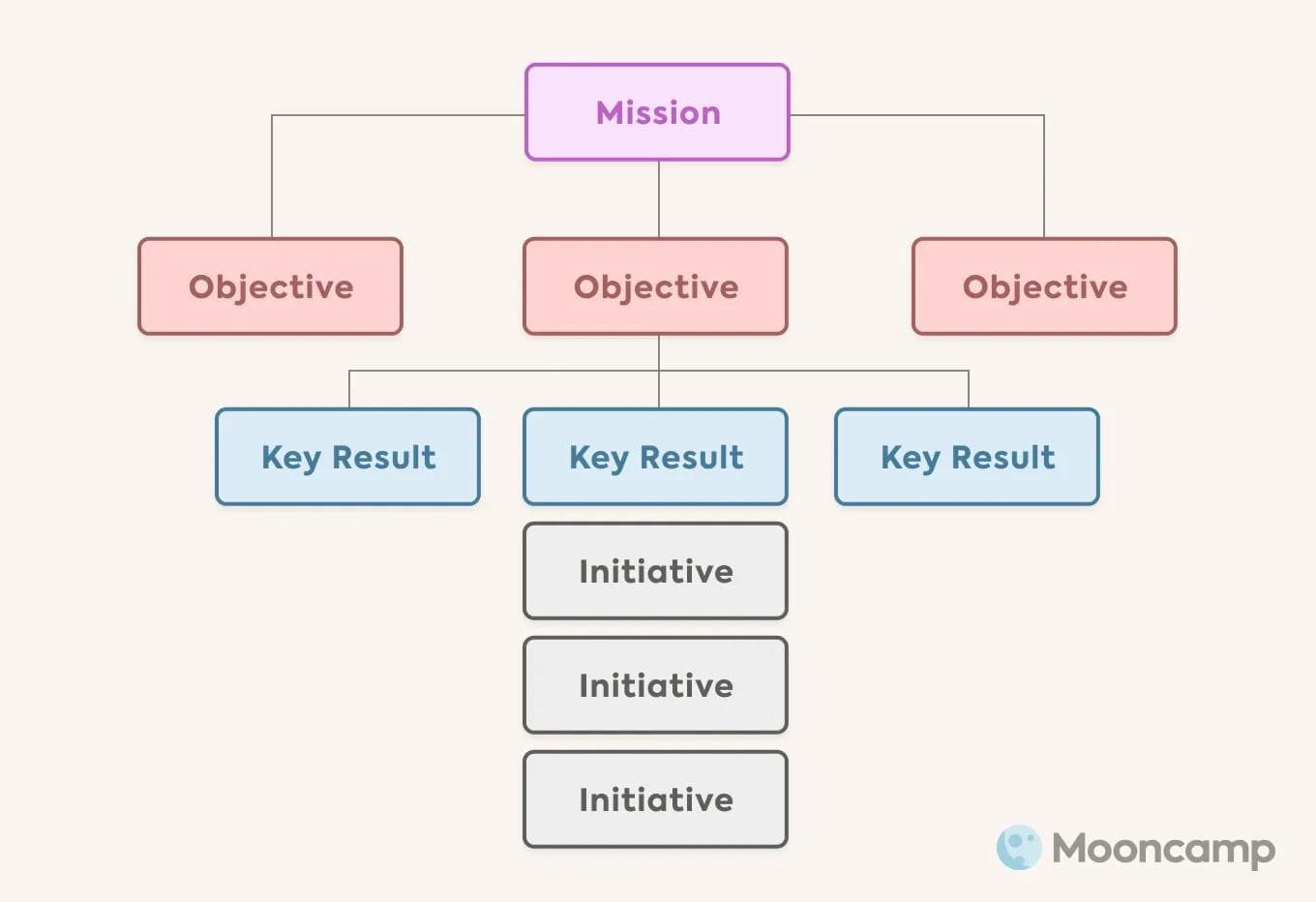
💡 Tip: Learn more about OKRs and what they actually have to do with agility in our guide to OKR, Agile & Scrum. If you want to know how goals and OKRs work with Mooncamp, it's worth taking a look at our product pages.
5. Spotify
The Spotify model can also be used to organize individual teams as well as entire companies in an agile manner. Large teams or even entire companies are divided into many smaller, interdisciplinary units (squads), which in turn are part of a tribe. Tribes are therefore groups of squads that work together on a product or service. In addition, the chapters provide employees with a technical or functional home (e.g., marketing, sales, etc.).

6. SAFe – Scaled Agile Framework
SAFe is an agile framework that is used in software development – especially when working on extensive software solutions on a large scale with several hundred employees. SAFe is accordingly structured in a relatively complex way with several levels, roles and workflows.
SAFe comprises seven dimensions:
- Organizational Agility
- Lean Portfolio Management
- Enterprise Solution Delivery
- Agile Product Delivery
- Team and Technical Agility
- Continuous Learning Culture
- Lean-Agile Leadership
In terms of day-to-day organization, this takes place on four levels within the SAFe framework. Simply put, these include:
- Teams, which organize themselves with Scrum and work in sprints
- Departments (Agile Release Trains), in which multiple agile teams work together
- A company that (depending on size) consists of several departments (release trains)
- A management that defines the vision and the product backlog and builds on lean principles
In a sense, SAFe combines several agile methods into one large framework that can be scaled as desired. Because of its complexity, SAFe is particularly suitable for large IT organizations; in most cases, the implementation is also accompanied by experts.
7. Sociocracy
Sociocracy is a model for developing an agile organization. The core of this method is the idea that all employees have a democratic say. This means that sociocratic companies are organized in semi-autonomous circles, each of which has its own goals and areas of responsibility.
Decisions are made autonomously within these circles, never by individuals, but instead by consensus – that is, in a process that consciously incorporates possible contradictions into decision-making.
In consensus, all team members are given the opportunity to express their opinions regarding an upcoming decision. The expressions are divided into “concerns” and “serious objections”. Concerns have no influence on the decision-making process; serious objections, if well founded, must be incorporated into the decision-making process. A final decision will not be made until all serious objections have been resolved.
In addition, each circle is always doubly linked to the circles above it. As an agile operating model, Sociocracy is particularly popular in associations, schools or nonprofit organizations.
8. Holacracy
Holacracy is, in a sense, the “commercial” version of Sociocracy. Holacracy relies on roles instead of job titles, and self-organized teams without traditional management. Employees can take on several roles, and similar or related roles are organized into individual circles in which responsibilities are clearly distributed. These circles are comparable to corporate divisions, e.g. Marketing, IT, Human Resources, etc.
The essential guidelines and structure for the management and administration of a holacratic organization are written down in a kind of constitution. Operational meetings, in which the focus is on day-to-day activities, are clearly separated from strategic meetings, which deal with how to further develop a circle.
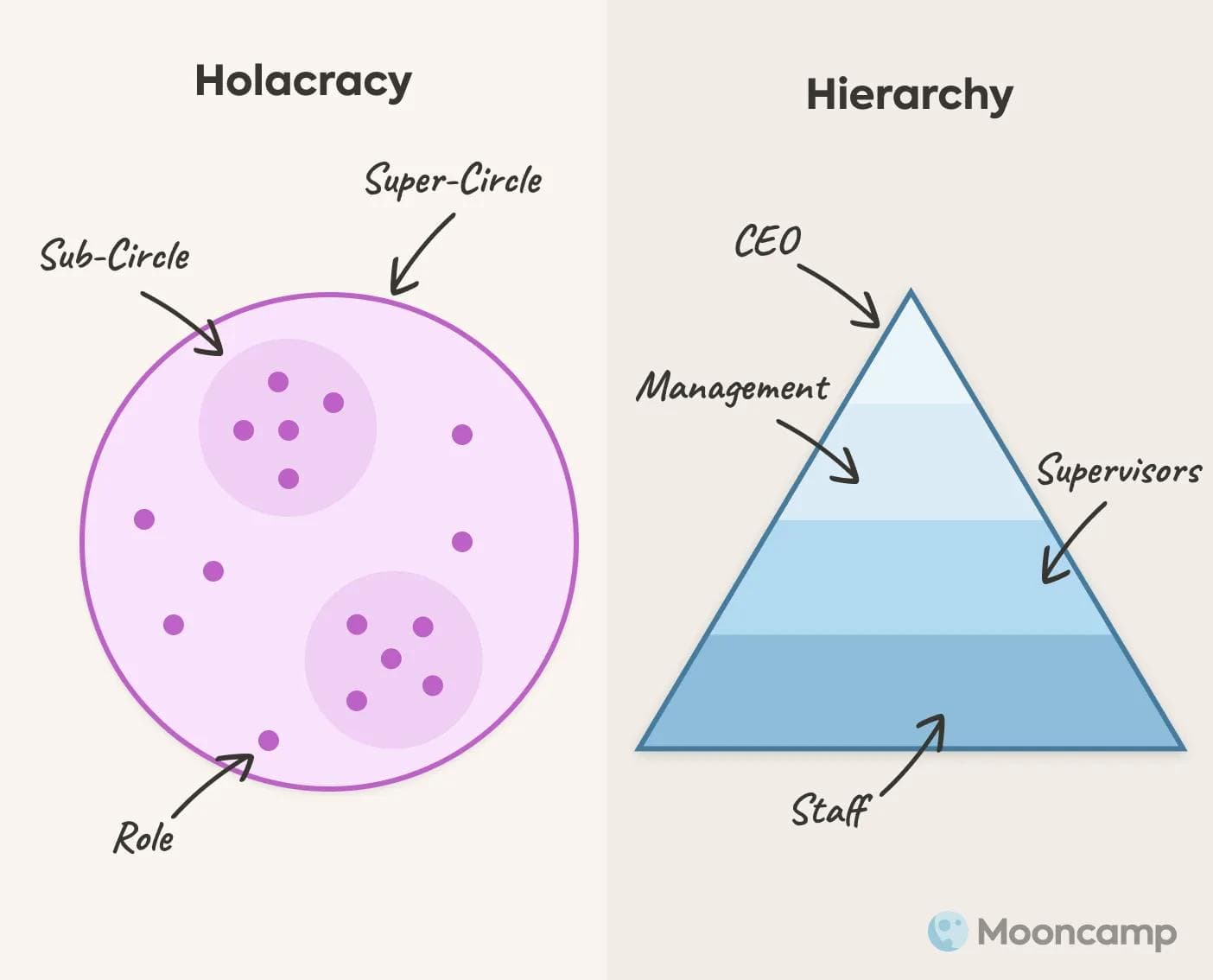
Conclusion: Agile organization is a competitive advantage
The world around us is becoming increasingly complex, markets are becoming more unpredictable, and companies are faced with new, ever-changing challenges.
An organization's ability to adapt quickly is thus becoming increasingly important in the face of new customer expectations, competitors and markets. More and more complex situations have to be dealt with and ever more decisions have to be made in less and less time. Moreover, in saturated markets, it is becoming increasingly important to really stand out from the competition.
An agile organization offers a possible solution to precisely these problems. That's because setting up agile structures enables companies to react flexibly to changes and keep up with the rapid pace in today's working world. This is especially true for business units that focus on innovation, product development and customer needs.
Agile organization – FAQ
What makes an agile company?
An agile organization can adapt to changes within a very short time and relies on a high degree of self-organization and communication instead of rigid, hierarchical structures.
What are common characteristics of agile companies?
Agile organizations are typically characterized by six key features: sense of purpose, customer centricity, agile leadership, agile methods, continuous improvement, culture and mindset.
What is an agile organization?
An agile organization is defined as a company that relies on an organizational structure that allows it to act quickly and flexibly in the market. In addition, an agile organization strives to continuously improve and implement the values and principles of agile project management at all levels in the best possible way.
How do you create an agile organization?
Change doesn't just happen overnight. Instead, it requires strong leadership that initiates change and then works steadily to optimize the newly introduced structures and firmly anchor them in the minds of employees.
What methods does an agile organization use?
Agile organizations can use different methods to structure themselves. Some examples of agile methods that work at the organizational level are the Spotify model, OKRs, Holacracy or “Scrum of Scrums” frameworks such as LeSS and Nexus.
